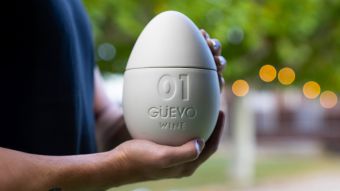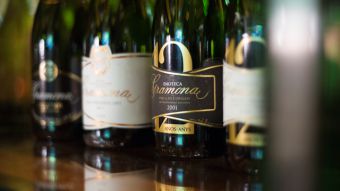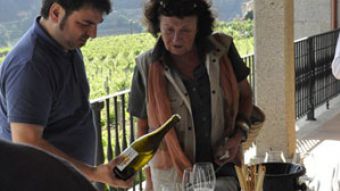The excellence and versatility of premium cava with food.
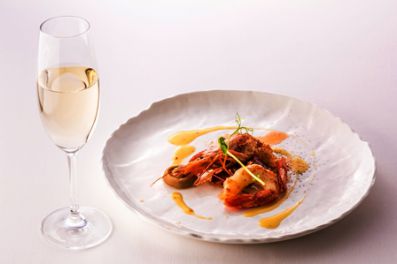 Sparkling wines enjoy pride of place at social gatherings and special meals, not just because of their traditional association with glamour and sophistication, but because of something that most sommeliers and wine experts agree on, their great versatility.
Sparkling wines enjoy pride of place at social gatherings and special meals, not just because of their traditional association with glamour and sophistication, but because of something that most sommeliers and wine experts agree on, their great versatility.
But, if we are going to talk about the “premium” cavas, then we have to go from talking about the cavas used for toasts to the cavas enjoyed with food. And it is precisely the grandeur of cava, with its various crianzas and coupages, that allows it to provide sommeliers and chefs with such a fantastic variety to play around with and great scope in terms of food pairings.
Not surprisingly, it is these premium cavas, aged for longer and possessing greater character, the kind in which the producer has sought to bring out the finest expression of the terroir and the winery, the Reservas and Gran Reservas, which feature prominently on the wine lists of the most important and prestigious restaurants in Spain. No doubt, the recommendations of international food-wine pairing experts, who consider that cava has an important role to play in the science of food pairing, have had something to do with this. And it is these experts to whom we will turn in order to recommend some dishes that will enable you to derive even greater enjoyment from these premium cavas.
Ferran Centelles, without doubt the sommelier who has explored food-wine pairings and theories in the greatest depth, tells us in his book, “Qué vino con este pato” (“what wine goes best with this duck"), that 25% of the wines served at El Bulli were sparkling wines because these were better suited to a menu as complex as the one created by Ferran Adrià in the famous restaurant in Cala Montjoi.
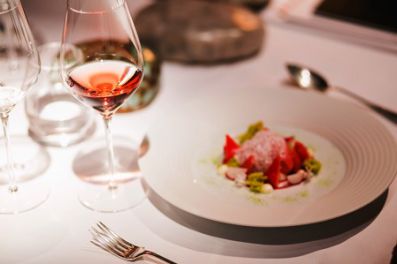 One of the first to mention the versatility of cava was the Korean-American Master of Wine, Jeannie Cho Lee, who talks about sparkling wine as being one of the most appropriate types of wine with Asian cuisine. The great diversity of aromas, spices, sauces and dressings present in the same meal makes it difficult to choose a single wine suitable for serving throughout this meal. But Cho Lee believes that sparkling wines are among the best suited to this role. Asian cuisine, which is increasingly present in European culinary culture, is therefore an ideal companion for sparkling wines. Taking her advice, we would therefore suggest you try a typical Cantonese dish, which makes the perfect starter - steamed dim sum stuffed with pork and prawns, lightly doused in soy sauce, dashi cooking stock and a few drops of hot spicy oil. Hot spice, which you might think would be problematical in terms of pairing, doesn’t actually upset cava at all. For these dim sum, or for Asian dishes with some hot spice, plump for a cava brut reserva.
One of the first to mention the versatility of cava was the Korean-American Master of Wine, Jeannie Cho Lee, who talks about sparkling wine as being one of the most appropriate types of wine with Asian cuisine. The great diversity of aromas, spices, sauces and dressings present in the same meal makes it difficult to choose a single wine suitable for serving throughout this meal. But Cho Lee believes that sparkling wines are among the best suited to this role. Asian cuisine, which is increasingly present in European culinary culture, is therefore an ideal companion for sparkling wines. Taking her advice, we would therefore suggest you try a typical Cantonese dish, which makes the perfect starter - steamed dim sum stuffed with pork and prawns, lightly doused in soy sauce, dashi cooking stock and a few drops of hot spicy oil. Hot spice, which you might think would be problematical in terms of pairing, doesn’t actually upset cava at all. For these dim sum, or for Asian dishes with some hot spice, plump for a cava brut reserva.
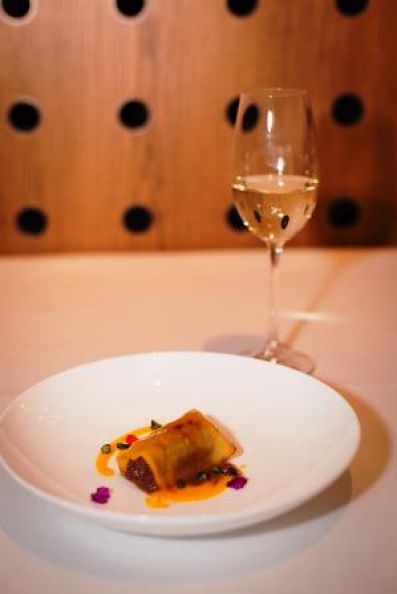 Someone else who has shed light on the mystery of food and drink pairing is François Chartier, who gave us some new insights with his molecular science in 2009. Food and wine share aromatic molecules and it is due to these that synergies are created. So what does Chartier say about sparkling wines? Well, he says that one of the molecules that will help us derive the most pleasure from mature cavas is Sotolon, an aroma compound commonly found in curry, soy sauce, veal cooking stock and sauces, dried mushrooms, toasted nuts, dates and dried figs. This molecule usually appears in wine aged over long periods of time (oxydative aging) and is therefore present in the Gran Reserva cavas with long ageing. Something else that makes these sparkling wines more attractive is the fact that they bring out the aromas created by autolysis (the death of the yeasts after the second fermentation in the bottle which gives the wine aromas of pastries and dried nuts, adding to its complexity). Cava is therefore ideal with some of the dishes that we generally like to enjoy on special occasions. Here’s a nice pairing you might want to try at Christmas: a Gran Reserva cava with roast poultry (chicken or turkey), cooked in a fashion that brings on the Maillard reaction which creates sweetness and complexity in the meat, delicious with a dressing of dried nuts, dates and figs. And, a tip for the curry lovers among you, don’t forget to add a pinch of it to further enhance this synergy between dish and cava.
Someone else who has shed light on the mystery of food and drink pairing is François Chartier, who gave us some new insights with his molecular science in 2009. Food and wine share aromatic molecules and it is due to these that synergies are created. So what does Chartier say about sparkling wines? Well, he says that one of the molecules that will help us derive the most pleasure from mature cavas is Sotolon, an aroma compound commonly found in curry, soy sauce, veal cooking stock and sauces, dried mushrooms, toasted nuts, dates and dried figs. This molecule usually appears in wine aged over long periods of time (oxydative aging) and is therefore present in the Gran Reserva cavas with long ageing. Something else that makes these sparkling wines more attractive is the fact that they bring out the aromas created by autolysis (the death of the yeasts after the second fermentation in the bottle which gives the wine aromas of pastries and dried nuts, adding to its complexity). Cava is therefore ideal with some of the dishes that we generally like to enjoy on special occasions. Here’s a nice pairing you might want to try at Christmas: a Gran Reserva cava with roast poultry (chicken or turkey), cooked in a fashion that brings on the Maillard reaction which creates sweetness and complexity in the meat, delicious with a dressing of dried nuts, dates and figs. And, a tip for the curry lovers among you, don’t forget to add a pinch of it to further enhance this synergy between dish and cava.
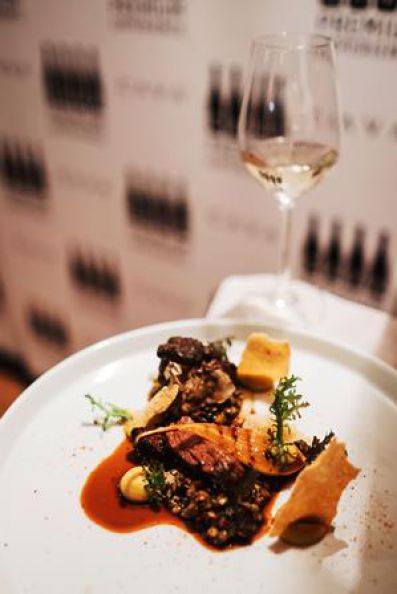 While discussing the excellence of cava, we should, of course, mention the newcomers, although they are not actually new, the Cavas de Paraje Calificado (classified single vineyard cavas). For these cavas, we would suggest delicate, elegant dishes with flavours that respect their subtlety and depth. Why not try a ravioli of scallops with an artichoke heart and a sliver of Iberian bacon? One of these ingredients, the artichoke, is described by some as “one of wine’s enemies”, a theory that Ferran Centelles himself tries to dispel in an article which appeared in Jancis Robinson’s "purple pages".
While discussing the excellence of cava, we should, of course, mention the newcomers, although they are not actually new, the Cavas de Paraje Calificado (classified single vineyard cavas). For these cavas, we would suggest delicate, elegant dishes with flavours that respect their subtlety and depth. Why not try a ravioli of scallops with an artichoke heart and a sliver of Iberian bacon? One of these ingredients, the artichoke, is described by some as “one of wine’s enemies”, a theory that Ferran Centelles himself tries to dispel in an article which appeared in Jancis Robinson’s "purple pages".
We started by talking about versatility and cannot finish without talking about how great this type of cava is with cheeses and desserts. For the first, we would recommend goat’s cheese with a nice acidity complemented by that of the cava. And, in terms of desserts, a tarte tatin with a touch of cinnamon would make a scrumptious match for a cava with a very slight touch of sweetness.
But you don’t need a dish as an excuse to uncork a bottle of one of these premium cavas. And remember, good table manners dictate that there should be silence while you uncork the bottle, but here too, rules are made to be broken.


